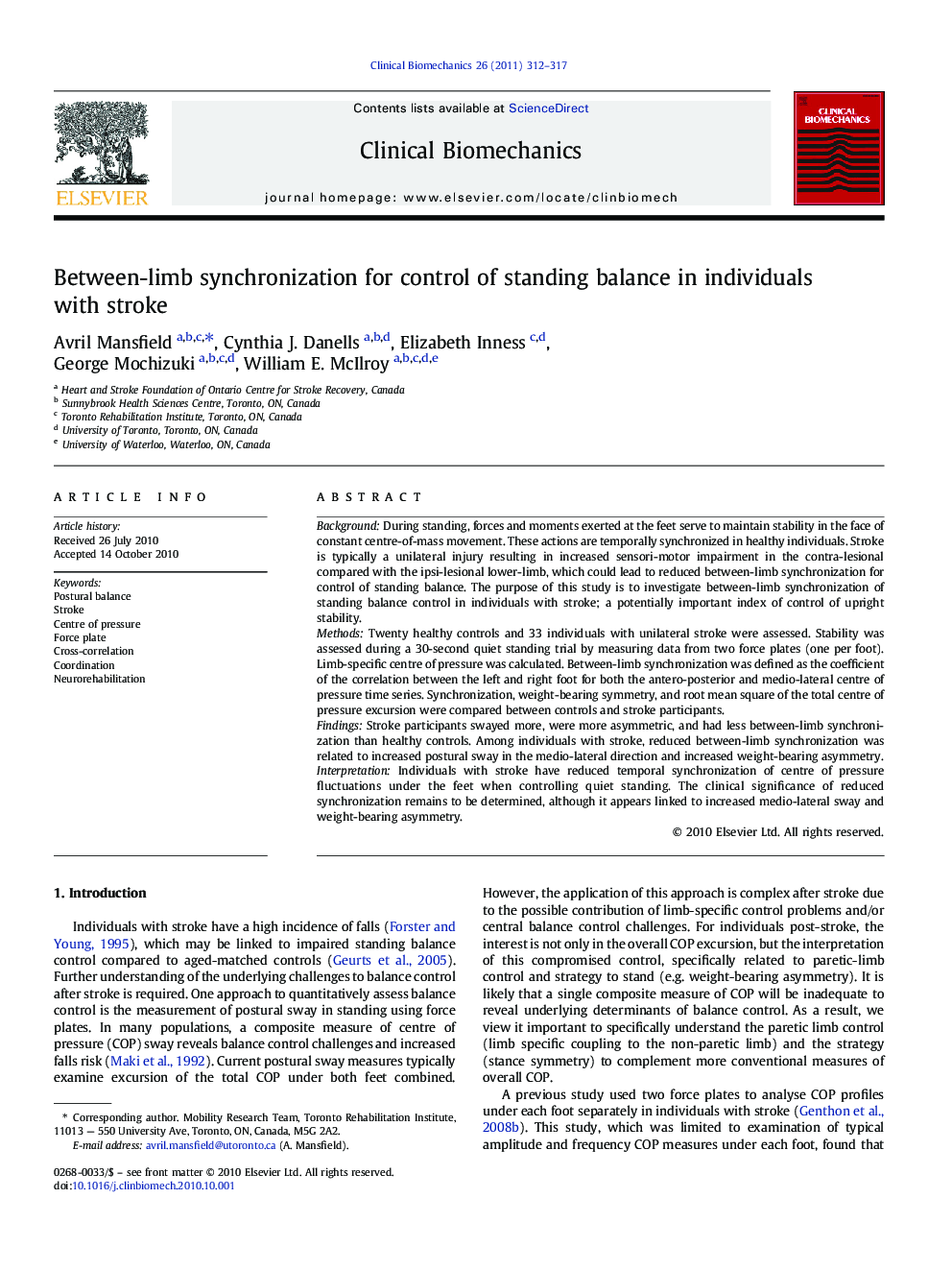| Article ID | Journal | Published Year | Pages | File Type |
|---|---|---|---|---|
| 4050929 | Clinical Biomechanics | 2011 | 6 Pages |
BackgroundDuring standing, forces and moments exerted at the feet serve to maintain stability in the face of constant centre-of-mass movement. These actions are temporally synchronized in healthy individuals. Stroke is typically a unilateral injury resulting in increased sensori-motor impairment in the contra-lesional compared with the ipsi-lesional lower-limb, which could lead to reduced between-limb synchronization for control of standing balance. The purpose of this study is to investigate between-limb synchronization of standing balance control in individuals with stroke; a potentially important index of control of upright stability.MethodsTwenty healthy controls and 33 individuals with unilateral stroke were assessed. Stability was assessed during a 30-second quiet standing trial by measuring data from two force plates (one per foot). Limb-specific centre of pressure was calculated. Between-limb synchronization was defined as the coefficient of the correlation between the left and right foot for both the antero-posterior and medio-lateral centre of pressure time series. Synchronization, weight-bearing symmetry, and root mean square of the total centre of pressure excursion were compared between controls and stroke participants.FindingsStroke participants swayed more, were more asymmetric, and had less between-limb synchronization than healthy controls. Among individuals with stroke, reduced between-limb synchronization was related to increased postural sway in the medio-lateral direction and increased weight-bearing asymmetry.InterpretationIndividuals with stroke have reduced temporal synchronization of centre of pressure fluctuations under the feet when controlling quiet standing. The clinical significance of reduced synchronization remains to be determined, although it appears linked to increased medio-lateral sway and weight-bearing asymmetry.
